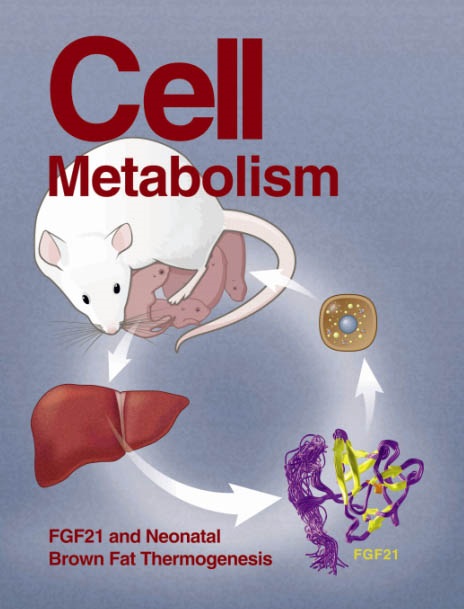利用丙酮酸、乙酸和酮的分层肝脏新生脂肪生成底物供应网络
IF 30.9
1区 生物学
Q1 CELL BIOLOGY
引用次数: 0
摘要
肝脏新生脂肪生成(DNL)是一个基本的生理过程,在代谢性疾病中往往会出现病理性升高。由于对供应细胞质乙酰-CoA(DNL 的必需前体)的代谢途径(包括它们之间的相互作用和贡献比例)了解不全面,治疗受到了限制。在这里,我们将广泛的 13C 追踪与肝脏特异性敲除介导细胞膜乙酰-CoA 生成的关键线粒体和细胞膜蛋白相结合。我们发现,线粒体丙酮酸载体(MPC)和ATP-柠檬酸裂解酶(ACLY)是肝脏乙酰-CoA产生的主要途径,与乙酰-CoA合成酶2(ACSS2)并行运作。鉴于线粒体柠檬酸载体(CiC)和 ACSS2 双基因敲除后持续存在的 DNL,我们测试了外源和亮氨酸来源的乙酰乙酸对乙酰乙酰-CoA 合成酶(AACS)依赖性 DNL 的贡献。CiC 基因敲除增加了乙酰乙酸供应的肝脏乙酰-CoA 产量和 DNL,表明酮体具有线粒体-柠檬酸互作 DNL 前体的功能。通过勾画线粒体-细胞质 DNL 底物供应网络,这些发现可为调节 DNL 的治疗策略提供参考。本文章由计算机程序翻译,如有差异,请以英文原文为准。

A hierarchical hepatic de novo lipogenesis substrate supply network utilizing pyruvate, acetate, and ketones
Hepatic de novo lipogenesis (DNL) is a fundamental physiologic process that is often pathogenically elevated in metabolic disease. Treatment is limited by incomplete understanding of the metabolic pathways supplying cytosolic acetyl-CoA, the obligate precursor to DNL, including their interactions and proportional contributions. Here, we combined extensive 13C tracing with liver-specific knockout of key mitochondrial and cytosolic proteins mediating cytosolic acetyl-CoA production. We show that the mitochondrial pyruvate carrier (MPC) and ATP-citrate lyase (ACLY) gate the major hepatic lipogenic acetyl-CoA production pathway, operating in parallel with acetyl-CoA synthetase 2 (ACSS2). Given persistent DNL after mitochondrial citrate carrier (CiC) and ACSS2 double knockout, we tested the contribution of exogenous and leucine-derived acetoacetate to acetoacetyl-CoA synthetase (AACS)-dependent DNL. CiC knockout increased acetoacetate-supplied hepatic acetyl-CoA production and DNL, indicating that ketones function as mitochondrial-citrate reciprocal DNL precursors. By delineating a mitochondrial-cytosolic DNL substrate supply network, these findings may inform strategies to therapeutically modulate DNL.
求助全文
通过发布文献求助,成功后即可免费获取论文全文。
去求助
来源期刊

Cell metabolism
生物-内分泌学与代谢
CiteScore
48.60
自引率
1.40%
发文量
173
审稿时长
2.5 months
期刊介绍:
Cell Metabolism is a top research journal established in 2005 that focuses on publishing original and impactful papers in the field of metabolic research.It covers a wide range of topics including diabetes, obesity, cardiovascular biology, aging and stress responses, circadian biology, and many others.
Cell Metabolism aims to contribute to the advancement of metabolic research by providing a platform for the publication and dissemination of high-quality research and thought-provoking articles.
 求助内容:
求助内容: 应助结果提醒方式:
应助结果提醒方式:


